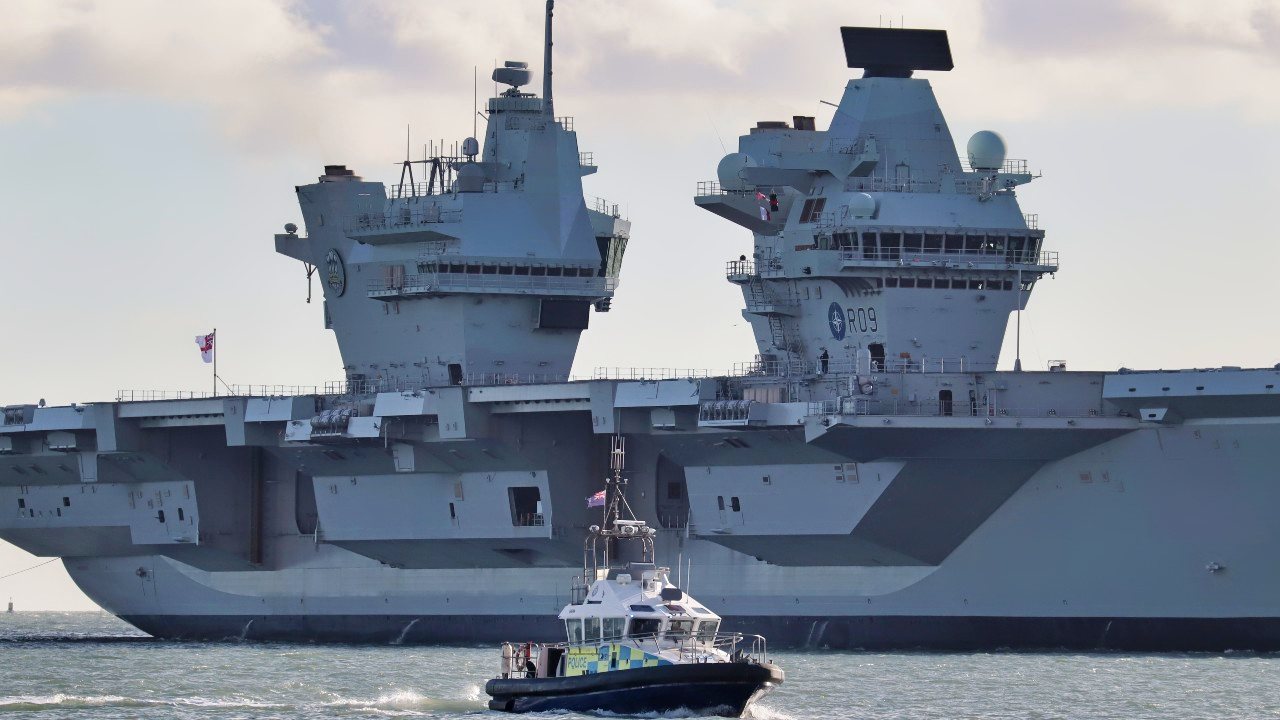Royal Navy's Ultimate Nightmare: Selling An Aircraft Carrier
The Royal Navy faces the potential sale of one of its aircraft carriers, HMS Prince of Wales, due to funding issues. Despite the "heir and a spare" policy, operational constraints and financial pressures may lead to disposing of the £3.5 billion carrier by 2028.
Summary: The Royal Navy faces the potential sale of one of its aircraft carriers, HMS Prince of Wales, due to funding issues. Despite the "heir and a spare" policy, operational constraints and financial pressures may lead to disposing of the £3.5 billion carrier by 2028. With recruitment and retention challenges and limited support vessels, the UK's ability to sustain its carrier fleet is in question. Political decisions further complicate matters, hindering operational opportunities. As discussions ensue within naval circles, the fate of the second carrier hangs in the balance, posing significant implications for the UK's maritime capabilities.
UK's Royal Navy Faces Dilemma: Will HMS Prince of Wales Aircraft Carrier Be Sold
Will The UK Have to Sell One of Its Aircraft Carriers? - The United Kingdom has long had a policy of having an "heir and a spare" when it comes to the monarchy, and the Royal Navy has likely also been grateful that it has a "spare" aircraft carrier. Twice in just a year and a half, one of its two Queen Elizabeth-class flattops has been sidelined, but the other was ready to step up.
Yet, the Royal Navy may be forced to sell off the £3.5 billion aircraft carrier HMS Prince of Wales as early as 2028 due to funding issues, The Daily Mail reported on Thursday citing naval officials. Described as an "HS2 moment" for the Royal Navy – evoking the British government's decision to scrap part of a proposed costly high-speed rail project – it could see the carrier mothballed or even sold to a friendly nation if defense finances aren't improved.
A naval source told the British tabloid that the "nightmare scenario of selling a carrier" to free up funds had been discussed by members of the Maritime Enterprise Planning Group, which looks at future considerations and strategies.
"There's an awareness in the group that the Navy is struggling to maintain operational commitments and has to expand the fleet as rapidly as possible," an unnamed source was quoted as stating, adding, "The second carrier is an asset that is held in reserve and is a very expensive piece of rarely-used equipment. So if we want to address balance sheet issues, disposing of her or sharing her with say an AUKUS [Australia, UK and US] ally, is an option."
Expensive Warships
The Royal Navy's two Queen Elizabeth-class aircraft carriers were approved in 2007 by then-Prime Minister Gordon Brown. HMS Prince of Wales was almost canceled and scrapped even before it set sail due to concerns over funding, yet, it was determined that axing it would be more expensive than completing it.
HMS Prince of Wales and HMS Queen Elizabeth cost a combined £7 billion, but it is widely accepted the Royal Navy remains unable to adequately defend or operate them independently. The UK's senior service has just one solid stores ship, RFA Fort Victoria, to support the carriers and she is due to be retired in 2028.
Each of the 65,000-ton carriers requires a crew of 700 – and much like the U.S. Navy and other military branches, the Royal Navy is facing serious recruitment and retention issues.

There had been calls to send one of the two Royal Navy carriers to the Red Sea to support and possibly take over the patrol duties currently carried out by the United States Navy's nuclear-powered Nimitz-class supercarrier USS Dwight D. Eisenhower (CVN-69). The U.S. carrier and her strike group have been in the region for more than four months.
However, HMS Queen Elizabeth has been sidelined due to maintenance issues, and HMS Prince of Wales was forced to replace the Royal Navy's flagship in upcoming NATO exercises. It has left the sea service unable to step up to aid the U.S. Navy in the Middle East.
"If I was a carrier-sceptic, and there are plenty, I would be gunning for one of them right now," retired Royal Navy Commander Tom Sharpe told The Daily Mail. "It does not help their cause that when a near-perfect opportunity to use a carrier presented itself in the Red Sea, we didn't take it for political reasons. We must recognise the threat to the second carrier, that is the unpleasant reality; the nuclear deterrent is the UK's only ring-fenced capability."
The Royal Navy has counted on having a "spare" carrier – but the question will be whether it can afford to operate both in the coming years.
Author Experience and Expertise: Peter Suciu
Peter Suciu is a Michigan-based writer. He has contributed to more than four dozen magazines, newspapers, and websites with over 3,200 published pieces over a twenty-year career in journalism. He regularly writes about military hardware, firearms history, cybersecurity, politics, and international affairs. Peter is also a Contributing Writer for Forbes and Clearance Jobs. You can follow him on Twitter: @PeterSuciu. You can email the author: [email protected].


